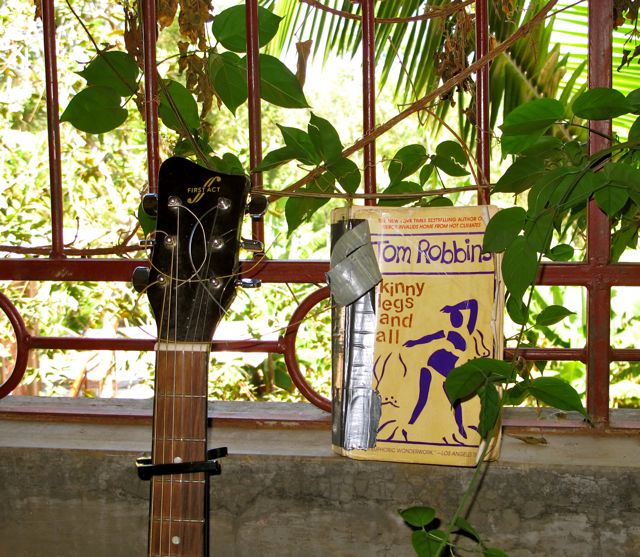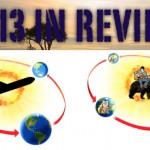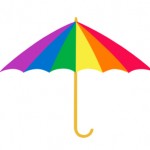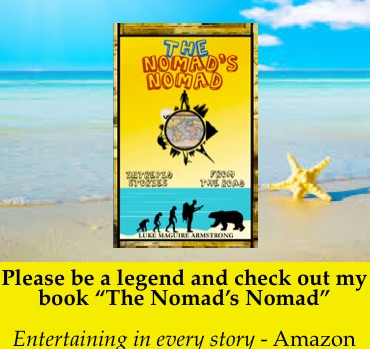 I had planned to get mucho done today in the order of computer required work. I even wrote myself a list. Tomorrow, Calvin, Tyler and I are jetting off into the off-the-grid wilds of Maasai Mara National Park, so I was trying to cram a week’s worth of work in a day. It’s 3pm here and nada on that list has even been started.
I had planned to get mucho done today in the order of computer required work. I even wrote myself a list. Tomorrow, Calvin, Tyler and I are jetting off into the off-the-grid wilds of Maasai Mara National Park, so I was trying to cram a week’s worth of work in a day. It’s 3pm here and nada on that list has even been started.
The guilty party is novelist Tom Robbins. Specifically, his book Skinny Legs and All. Just as guilty, my NYC roommate, Andrew, who lent me the book. Such was the unyielding pull of its pages that I found myself eye-deep in the cliché of not being able to put it down.
When I did put it down, after somewhat sadly reading it’s last word on page 422, it slapped the concrete floor of my room, with a remorseful thud as I realized that not till I leave Africa will I be able to make a literally hedonistic trip to some unsuspecting bookstore to pillage whichever Tom Robbins novels happen to be minding their own business on the shelves.
Tom Robbins, Scorpion Honey
I’d been meaning to get into Tom Robbins since 2008, when my restaurateur-painter-novelist friend Alex Ferrar wrote this quotations on the margin of a manuscript he was proofing: Tequila, scorpion honey, harsh dew of the doglands, essence of Aztec, crema de cacti; tequila, oily and thermal like the sun in solution; tequila, liquid geometry of passion; Tequila, the buzzard god who copulates in midair with the ascending souls of dying virgins; tequila, firebug in the house of good taste; O tequila, savage water of sorcery, what confusion and mischief your sly, rebellious drops do generate!
How I kept myself from reading him five years after he blipped on my radar is cause for some alarm (If I’m only just now getting into this, what other things am I missing out on?). If previous phrase was music to your ears, reading one of Tom Robbins novel’s is a 500-piece orchestra of unrestrained musical glory.
Why Is Skinny Legs and All So Awesome?
The themes covered in Skinny Legs and All are dialed to some of most important issues in, well, life: Art, politics, religion, race, money and love. Robbin’s ability to pack humor so densely in his apt descriptions is best I’ve ever read.
A fan of the plausible, normally, inanimate objects suddenly springing to life are grounds for me to put a book down (sorta like how I turned off Pirates of the Caribbean when ghosts showed up). But Robbins made a sock, a spoon, a can of beans, a painted stick and a conch shell come to life as such believable characters—did it so naturally—that not even I could hold it against him.
Concerning the situation in the ongoing debacle in the Middle East, I feel I’ve learned more from this book than from history books and a decade of following the news. And these lessons come effortlessly, integrally embedded in the narrative.
The core of the book is about shedding the ‘veils’ that separate humanity from higher truths—The Divine. “Each and every single individual had to establish his or her own special, personal particular, unique, direct, one-on-one, hands-on relationship with reality, with the universe, with the Divine.”
“Religion,” Robbins discovers the artist protagonist, Ellen Cherry, is “an attempt to pin down the Divine . . . The Divine was expansive, but religion was reduction,” an attempt to “pigeonhole” reality.
But before you think this book is some sort-of treatise, its wisdom embedded in such playfully wonderful language—a food for thought so delicious—that you forget your learning anything.
The year is young, but this is the best I’ve read this year and I can’t think of one read last year that tops it. I don’t do book reviews normally on this site, but this book forced my hand. If there’s one author worth checking out, it’s Tom Robbins.





